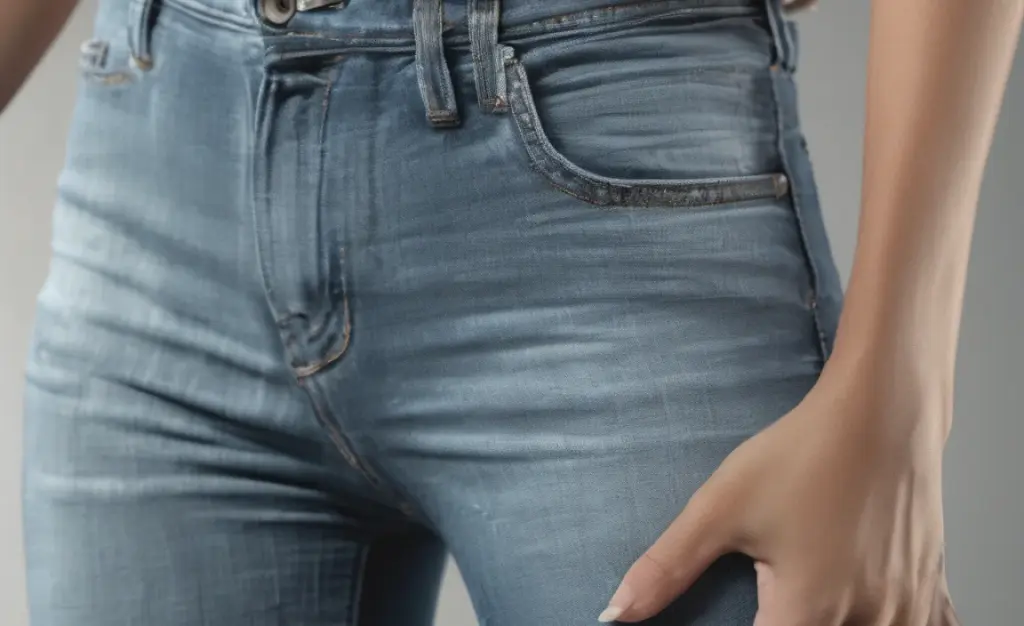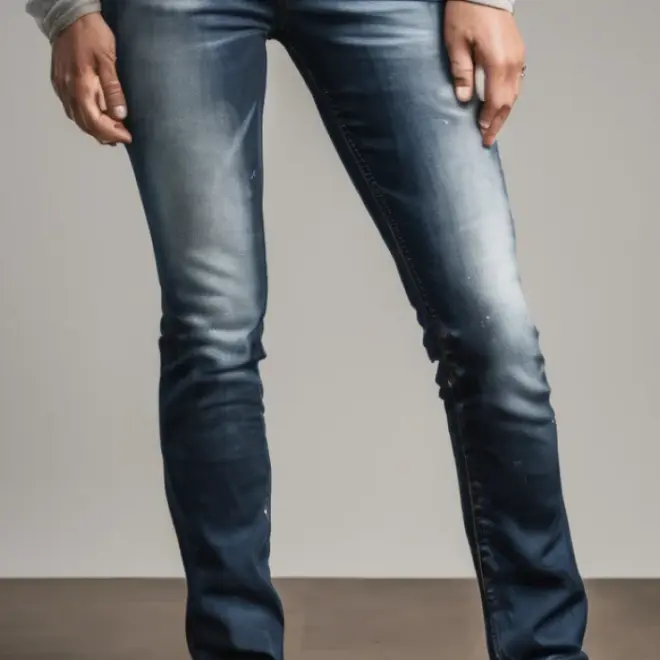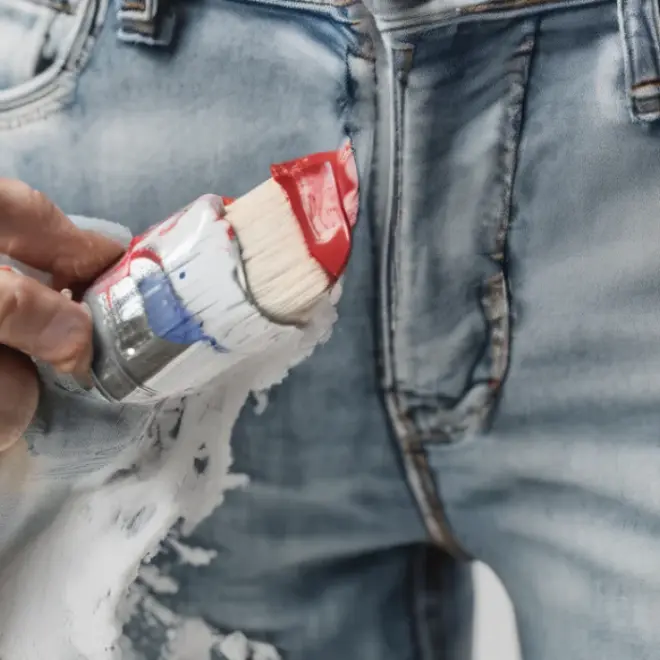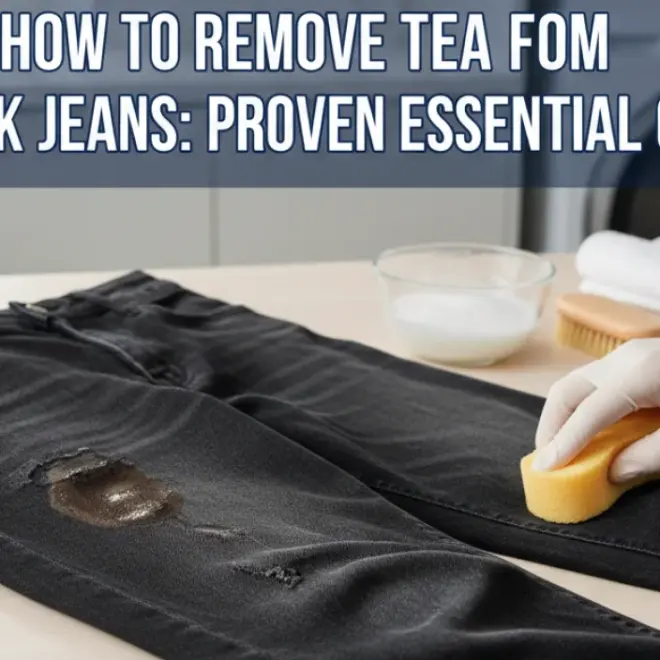To soften stiff, new skinny jeans, easily and effectively, try soaking them in lukewarm water with a bit of fabric softener for a few hours, then tumble dry on low heat. This simple method loosens fibers and reduces that rigid feeling, making your jeans comfortable and ready to wear.
New skinny jeans can be incredibly stiff. It’s a common frustration when you’re excited to wear a new pair, but they feel rigid and uncomfortable. Instead of pushing through that stiffness or giving up on your favorite style, there’s a straightforward solution. We’ll guide you through a proven method to break in your skinny jeans and make them feel like an old favorite, right from the start. Get ready to enjoy comfortable denim without the wait.
The Frustration of Stiff Denim

Denim, especially for skinny jeans, is often treated with sizing to give it structure and a crisp feel straight off the rack. While this keeps the jeans looking sharp in the store, once you get them home, that stiffness can make them feel restrictive, hard to move in, and just plain uncomforable. This feeling can be especially pronounced with skinny styles where the fit is already snug. You might find yourself avoiding wearing them altogether, which defeats the purpose of buying them in the first place. The good news is that softening them up isn’t difficult and can be done with readily available household items.
Why Soften Skinny Jeans?
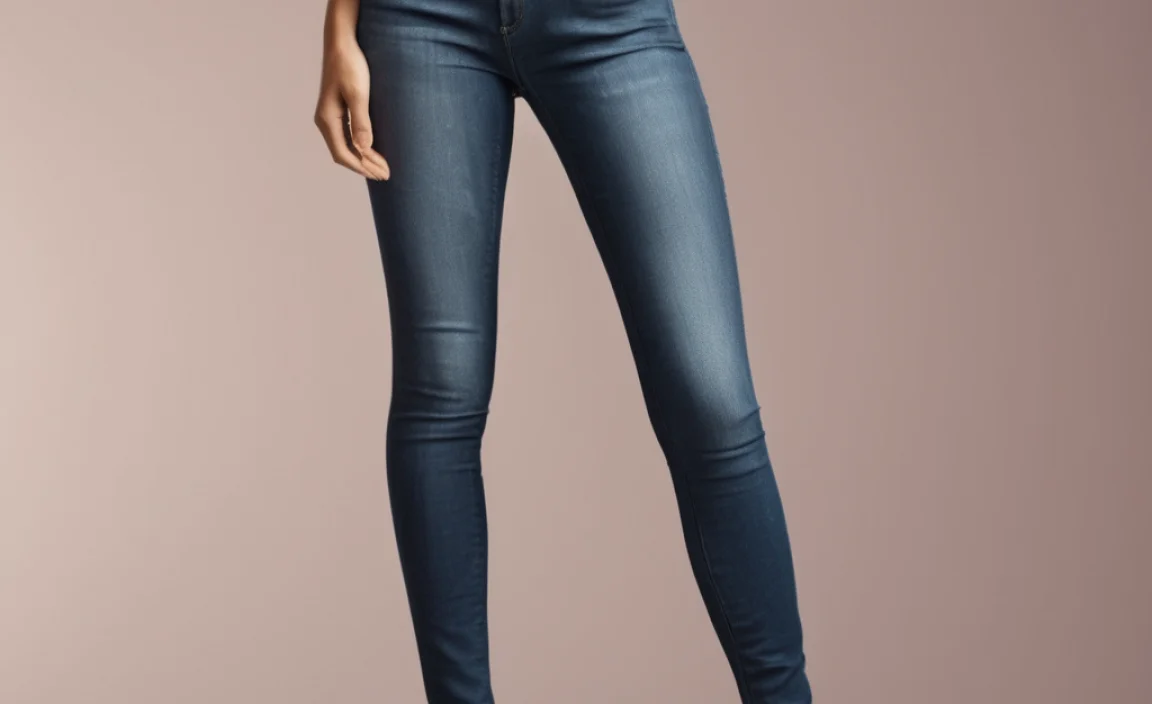
Softening your skinny jeans offers several key benefits:
- Increased Comfort: The primary reason is to make them feel less rigid and more pliable against your skin.
- Improved Fit: Softer denim often conforms better to your body’s shape, leading to a more flattering and comfortable fit.
- Easier Movement: Stiff jeans can restrict your ability to move freely. Softening loosens them up, allowing for better mobility throughout the day.
- Reduced Break-In Time: This method significantly cuts down the time it takes for jeans to feel worn-in and comfortable, saving you from an uncomfortable initial period.
The Proven Method: A Step-by-Step Guide

This method focuses on using water and a softening agent to gently relax the denim fibers. It’s effective for most types of denim and is a safe way to achieve softer jeans without damaging the fabric. You’ll need a few basic items and a little bit of time.
What You’ll Need:
- A bathtub, large sink, or a clean plastic bin (large enough to fully submerge your jeans)
- Lukewarm water
- Fabric softener (liquid or dryer sheets work; see notes below)
- A towel
- A clothes dryer
Step 1: Prepare Your Soaking Area
Choose a watertight container where your jeans can be fully submerged. A bathtub is ideal because of its size, but a large sink or a clean plastic storage bin can also work. Ensure the area is clean to avoid transferring any dirt or residue onto your jeans.
Step 2: Fill with Lukewarm Water
Fill your chosen container with enough lukewarm water to completely cover your skinny jeans. Avoid using hot water, as it can sometimes cause colors to fade or damage elastic fibers in stretch denim. Lukewarm water is gentle enough to relax the fibers without causing harm.
Step 3: Add the Softening Agent
This is where the magic happens. You have a couple of options for softening agents:
- Liquid Fabric Softener: Add about 1/4 to 1/2 cup of liquid fabric softener to the water. Stir it around to ensure it’s well dispersed. A little goes a long way.
- Dryer Sheets: If you don’t have liquid fabric softener, you can use 2-3 fabric softener dryer sheets. Simply toss them into the water and let them soak. They will release their softening agents.
Note on Fabric Softeners: While fabric softeners are designed to coat fibers and make them feel softer, it’s important to use them sparingly. Overuse can sometimes lead to a waxy buildup on the fabric over time, which could affect the denim’s breathability or cause it to attract more lint. For this initial softening process, the recommended amounts are safe and effective. For ongoing care, consider more natural methods or infrequent use of softeners to maintain denim’s integrity.
Step 4: Submerge and Soak Your Jeans
Turn your skinny jeans inside out. This helps protect the outer color and surface from any potential unevenness in the softening process. Submerge them completely in the water. Gently press them down to ensure they are fully saturated and that no air pockets are trapped. Let them soak for at least 2-4 hours. For particularly stiff denim, you can extend the soaking time up to overnight. The longer they soak, the more the fibers will relax.
Step 5: Rinse Thoroughly
After the soaking period, drain the soapy water. Refill the tub or container with clean, cool water. Agitate the jeans gently to rinse out all the fabric softener. You may need to drain and refill with clean water a couple of times to ensure all residue is removed. This step is crucial to prevent any lingering softener from attracting dirt or affecting the feel of the fabric.
Step 6: Gentle Spin and Towel Dry
Once rinsed, gently squeeze out as much excess water as possible from the jeans. Avoid wringing them aggressively, as this can stretch or damage the fabric, especially if they contain elastane or spandex. Roll the jeans up tightly inside a clean, dry towel. Press down on the towel-wrapped jeans to absorb more moisture. Repeat with a second dry towel if necessary.
Step 7: Tumble Dry on Low Heat
Place the slightly damp jeans in your clothes dryer. Set the dryer to the lowest heat setting or an air-fluff cycle. High heat can shrink denim and damage stretch fibers, so low heat is essential. Let them tumble dry until they are just dry or still slightly damp. Over-drying can make them stiff again. Remove them from the dryer while they are still a little warm and slightly damp.
Step 8: Air Dry to Finish
Hang your jeans to air dry completely. This final air-drying stage helps them retain their softened state and prevents over-drying. Once they are fully dry, they should feel noticeably softer and more comfortable.
Alternative Methods for Softening Denim

While the fabric softener soak is highly effective, here are a couple of other approaches you can consider:
Method 2: The Vinegar Soak (Natural Softener)
White vinegar is a natural fabric softener and deodorizer. It’s a great alternative if you prefer to avoid synthetic fabric softeners.
What You’ll Need:
- Bathtub, sink, or bin
- Cool water
- White vinegar
- Towel
- Clothes dryer
Steps:
- Fill your container with cool water.
- Add about 1-2 cups of white vinegar.
- Submerge your inside-out jeans and let them soak for 2-3 hours.
- Drain and rinse thoroughly with cool water to remove the vinegar smell.
- Gently squeeze out excess water and towel dry as described above.
- Tumble dry on low heat, then air dry to finish.
Tip: The vinegar smell will dissipate completely once the jeans are dry.
Method 3: Frequent Wear and Movement
The most traditional way to break in jeans is simply to wear them constantly. While this will undoubtedly soften them over time, it can be a lengthy and sometimes uncomfortable process, especially with rigid denim. For new jeans that are particularly stiff, this method alone might not be enough to make them truly comfortable right away.
Combining frequent wear with one of the softening methods above can speed up the process and ensure wearability throughout the break-in period.
What About Washing and Drying Your Jeans?
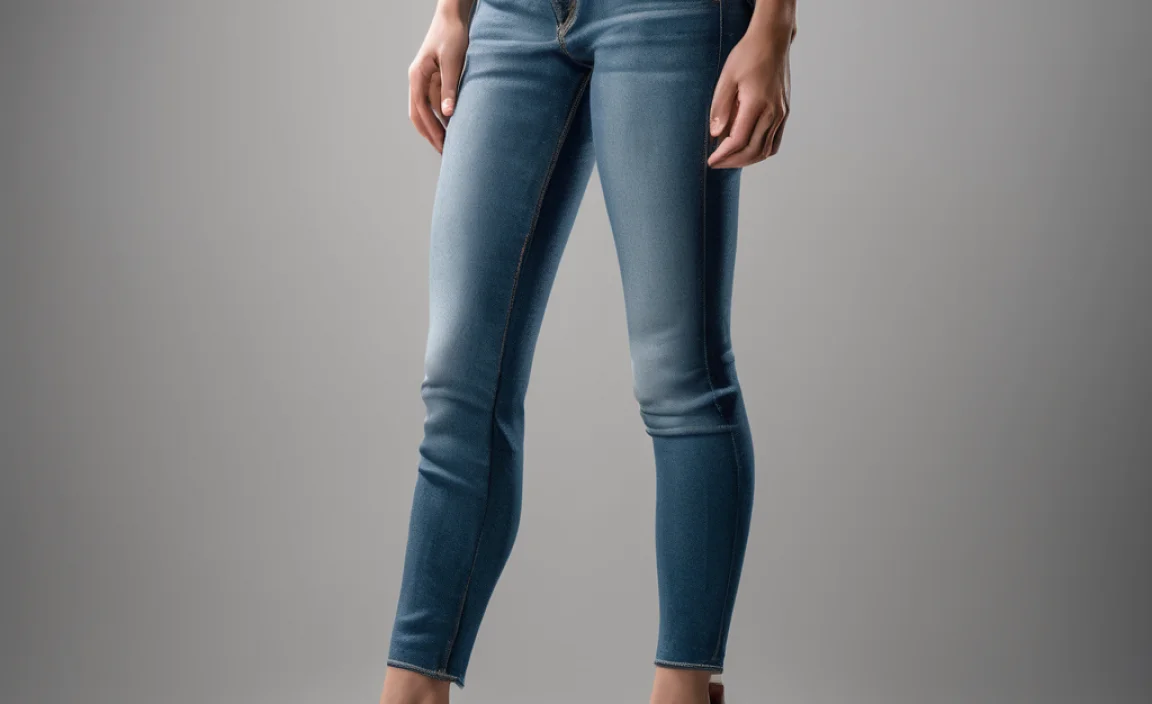
Understanding how to wash and dry your jeans properly is key to maintaining their softness after you’ve broken them in. Here’s a quick guide:
Washing
- Always wash inside out: This protects the color and reduces friction on the outer fabric.
- Use cold water: Cold water helps prevent shrinking and color fading.
- Choose a gentle cycle: A delicate or gentle setting is best for denim.
- Use a mild detergent: Opt for detergents without bleach or harsh chemicals.
- Avoid fabric softener sheets in the wash: While we used softener for the initial soaking, regular use in the washing machine can lead to buildup on your denim.
Drying
- Low heat or air dry: Always use the lowest heat setting on your dryer or an air-fluff cycle. High heat is the enemy of soft, well-fitting denim.
- Remove promptly: Take jeans out of the dryer while they are still slightly damp and let them finish air drying.
- Avoid over-drying: Over-dried denim can become stiff again.
For a deeper dive into denim care, the Federal Trade Commission (FTC) offers some helpful guidance that emphasizes prolonging the life of your garments.
Table: Pros and Cons of Softening Methods
Here’s a quick comparison of the methods:
| Method | Pros | Cons |
|---|---|---|
| Fabric Softener Soak | Very effective at softening fibers quickly. Easy to do at home. | Requires thorough rinsing. Potential for buildup with overuse. |
| Vinegar Soak | Natural and effective. Helps remove odors. Gentle on fabric. | Requires thorough rinsing to remove smell. May not be as intensely softening as commercial softeners for some fabrics. |
| Frequent Wear | Completely natural. Best for achieving a personalized fit. | Can be uncomfortable and time-consuming. May not be sufficient for very stiff denim alone. |
Understanding Denim and Shrinkage
Denim is made from cotton, a natural fiber that can react to water and heat. The way your jeans are constructed, including the weave of the fabric and the addition of synthetic fibers like elastane or spandex for stretch, will affect how they behave. Shrinkage can occur when cotton fibers are heated and agitated, causing them to contract. This is why using lukewarm or cool water and low heat during the softening and drying process is crucial. The goal is to relax the fibers, not to shrink them.
For more on fabric care and understanding textile properties, resources like the University of Kentucky Cooperative Extension provide valuable educational materials on clothing care and fabric science.
Tips for Maintaining Softness
Once your skinny jeans are softened, you’ll want to keep them that way. Follow these tips:
- Wash Less Often: Every wash cycle, especially with heat, can gradually wear down the fibers. Only wash your jeans when they are genuinely dirty or smelly.
- Spot Clean: For minor spills or marks, try spot cleaning with a damp cloth and mild soap instead of a full wash.
- Air Dry Whenever Possible: Air drying is much gentler on denim than machine drying.
- Avoid High Heat: Always remember to use cold water for washing and low heat or air dry for drying.
- Consider a Denim Wash: If you find your jeans stiffening up after a few washes, you can repeat a milder version of the softening soak using just water and a small amount of fabric softener or vinegar.
Frequently Asked Questions About Softening Skinny Jeans
Q1: Will softening my skinny jeans make them stretch out too much?
A: When using the recommended method with lukewarm water and a moderate amount of fabric softener or vinegar, the change is usually minimal. This process aims to relax the existing fibers, not to permanently stretch them beyond their original shape. Over-soaking or using excessively hot water could lead to more stretching, so stick to the guidelines.
Q2: Can I use fabric softener sheets instead of liquid softener?
A: Yes, absolutely. If you don’t have liquid fabric softener, 2-3 dryer sheets can be used in the soaking water. They release similar softening agents and are just as effective for this purpose.
Q3: How long should I soak my jeans?
A: For best results, soak your jeans for at least 2-4 hours. If your jeans are exceptionally stiff, you can soak them for longer, even overnight, but be sure to rinse them thoroughly afterward.
Q4: Is it safe to use fabric softener on my jeans every time I wash them?
A: It’s generally not recommended to use fabric softener every wash. Over time, it can cause a buildup on the fibers, making them less breathable and potentially attracting dirt. For regular washing, focus on cold water, a gentle cycle, and air drying. Save the fabric softener soak for when you need to break in new jeans or revive older ones.
Q5: Will this method work on black or dark-wash skinny jeans?
A: Yes, this method is safe for all colors of denim. Soaking them inside out helps protect the dye. Always use lukewarm water and avoid hot water, especially with dark washes, as it can contribute to fading.
Q6: How do I know if I’ve rinsed out enough fabric softener?
A: The water should run completely clear when you drain and refill during the rinsing stage. You shouldn’t feel any slippery or slick residue on the denim itself. If you can still feel a slight coating, rinse again.
Q7: Can I speed up the process by using hotter water or high heat in the dryer?
A: No. Using hotter water or high heat in the dryer is counterproductive and can actually damage the denim. It can cause shrinking, fading, and damage to any stretch fibers, making the problem of stiffness worse or permanently altering the fit.
A Word on Different Denim Types
It’s worth noting that not all denim is created equal. The type of denim significantly impacts how it behaves. Traditional 100% cotton denim, often found in raw or selvedge jeans, can be quite stiff initially but softens beautifully with wear and washing. Stretch denim, which incorporates elastane, spandex, or polyester, is designed for comfort and flexibility from the start. However, even stretch denim can have a manufactured stiffness from sizing treatments. For stretch denim, it’s even more important to be gentle with heat, as synthetic fibers are more susceptible to damage from high temperatures.
Understanding the composition of your jeans – often listed on the care label – can help you gauge how they might react to different treatments. For most modern skinny jeans that will have some stretch component, the softening method described is highly effective and safe.
Conclusion
Breaking in stiff skinny jeans no longer has to be an uncomfortable ordeal. By following this proven method of soaking your jeans in lukewarm water with a good softening agent and then drying them on a low setting, you can transform rigid denim into soft, comfortable wear. Remember to rinse thoroughly and be gentle throughout the process. With a little time and patience, your new favorite jeans will feel like old friends, ready for whatever your day holds, without the struggle of stiff, unforgiving fabric. Enjoy your newly softened denim!


